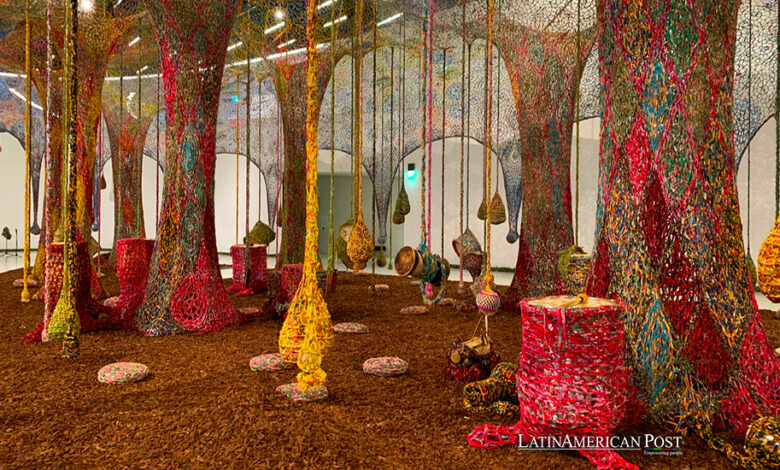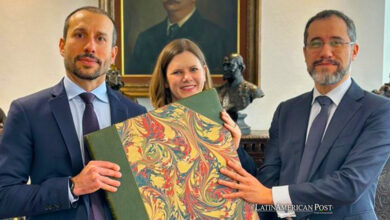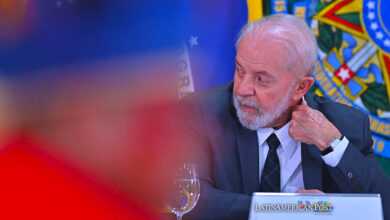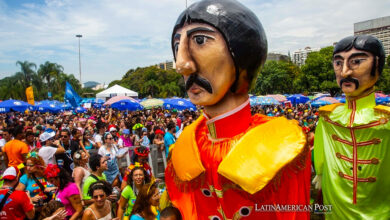Brazilian Ernesto Neto’s Immersive Installation Opens in Lisbon

Brazilian artist Ernesto Neto unveils ‘Nuestro barco tambor Tierra’ in Lisbon, an immersive installation reflecting cultural intersections and global futures through large-scale, interactive art.
The Museum of Art, Architecture and Technology (MAAT) in Lisbon will unveil a significant installation by Brazilian artist Ernesto Neto, titled ‘Nuestro barco tambor tierra’. This ambitious project, which engages with themes of self-discovery and global trajectories, marks a critical moment in contemporary art that connects deeply with the cultural narratives of Latin America.
Exploring Brazilian Cultural Heritage
Born in Rio de Janeiro in 1964, Neto’s work often draws on the rich tapestry of Brazilian cultural heritage, interweaving indigenous traditions and the complexities of modern societal issues. His latest installation in Lisbon is no exception. Inspired by the caravels that once sailed from Europe to the Americas, Neto has created an immersive, large-scale structure from braided fabrics, percussion instruments, and a carpet of wooden pieces. This environment invites visitors to enter, breathe in the natural scents, and interact with the objects, fostering a unique space for introspection and connection.
Neto explains that the installation is designed to facilitate a personal encounter with oneself, where visitors can confront their spirits and engage sincerely with personal and global challenges. He emphasizes the inseparability of environmental and social issues, suggesting that the forces harming our planet are the same ones exacerbating social disparities.
Addressing social inequalities in Brazil, Neto points to broader, universal challenges, such as the pervasive dependency on mobile technology, which he metaphorically compares to the mythological figure Narcissus drowning in his own reflection. He also highlights the ongoing environmental destruction as a critical issue his work seeks to encapsulate and critically examine.
Advocating for Indigenous Rights and Wisdom
A staunch advocate for indigenous rights, Neto urges Europeans to reconsider their historical narratives and learn from the societies they colonized. “What they have today is the possibility to learn from indigenous and African peoples, who possess incredible wisdom and profound spirituality,” Neto asserts. He contrasts this deep, spiritual connection to nature, which includes a sacred relationship with food and natural elements, with the consumerist and materialistic culture predominant in Europe.
Neto’s installation reflects his artistic vision and serves as a platform for cultural exchange and musical performances from artists worldwide, planned throughout its display until October 2024. These events aim to enrich the visitor’s experience, merging visual and auditory art forms to create a holistic sensory and intellectual journey.
The significance of Neto’s work extends beyond its aesthetic value, acting as a poignant critique of contemporary society’s trajectories and choices. He urges the cultivation of humanity’s more admirable qualities: “Man has been a wolf to man for many years, but we also sing, dance, and have a wonderful side. Let’s cultivate that.”
In a broader context, ‘Nuestro barco tambor Tierra’ reflects the ongoing dialogue in Latin America about integrating cultural heritage and modern identity. Latin American artists like Neto play a crucial role in this discourse, using their art to bridge past and present, indigenous and global, reflecting a region rich in history yet facing rapid modernization and its attendant challenges.
Neto’s installation is thus a microcosm of more significant debates in Latin America—how to reconcile rapid technological and economic changes with traditional ways of life that are deeply connected to nature and community. It raises crucial questions about progress, sustainability, and cultural integrity that resonate well beyond the confines of an art gallery.
A Call for Sustainable Futures
Through his artistic expression, Neto provides a space for reflection and a call to action. It invites viewers to rethink their relationships with the environment, technology, and each other and envision alternative pathways prioritizing sustainability, equity, and genuine connectivity. As the world becomes increasingly interconnected, such reflections are more relevant than ever, providing insights that could help steer global communities towards more harmonious and sustainable futures.
Also read: Latin America’s Cultural Treasures Unveiled in Madrid Exhibit
As ‘Nuestro barco tambor Tierra’ opens its doors to the public, it stands as a testament to the power of art to transcend cultural and geographic boundaries, offering a profound commentary on the shared journey of humanity in an era of unparalleled change.





